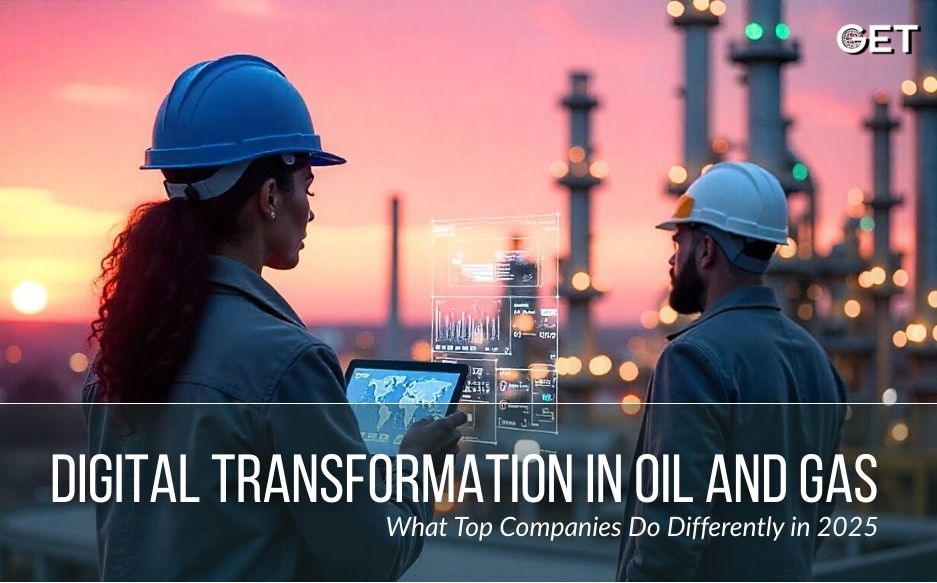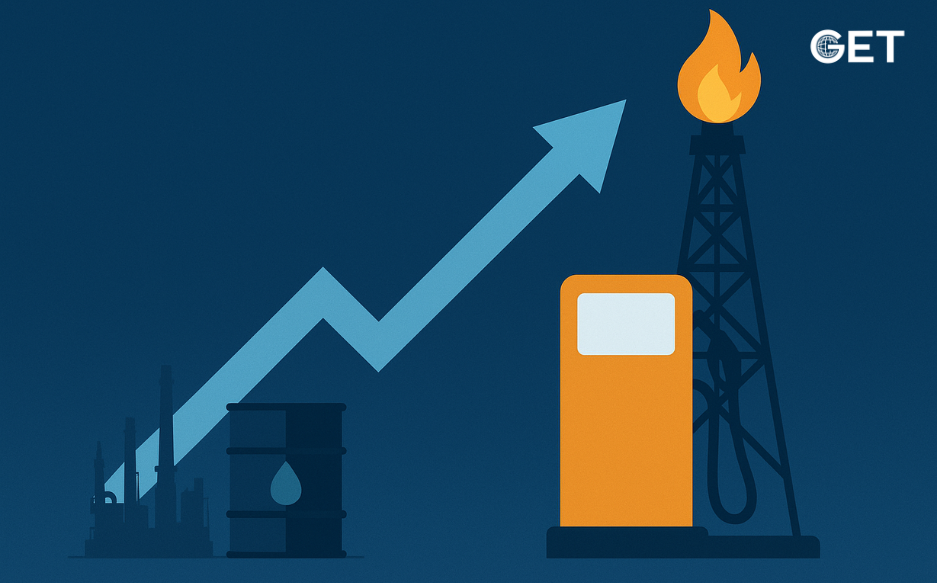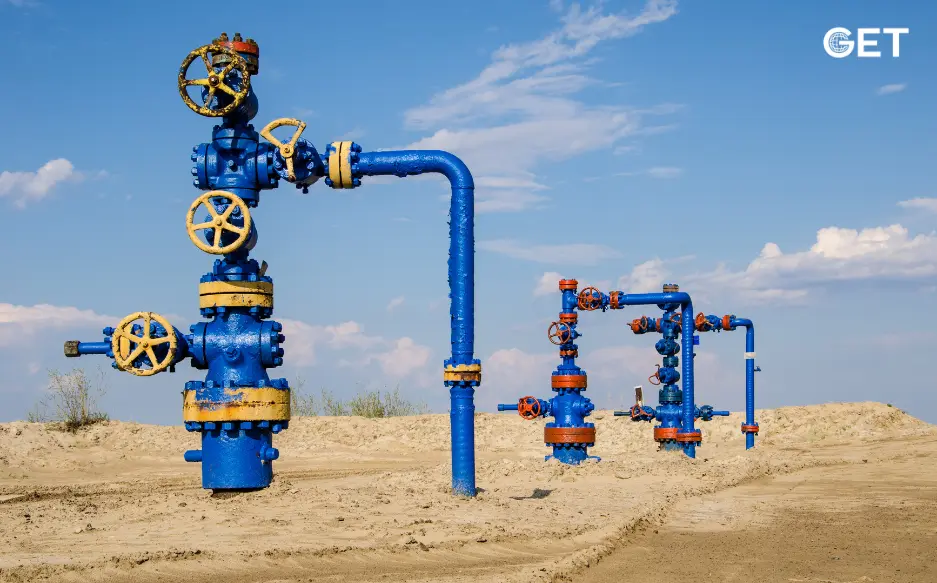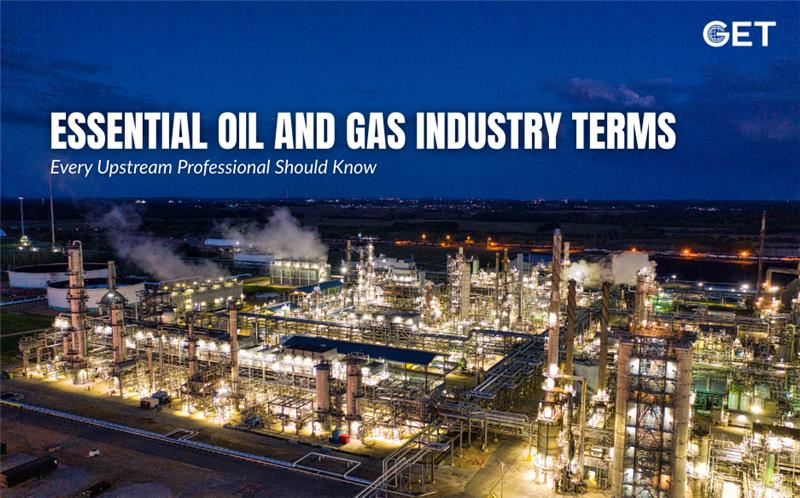
Digital transformation initiatives in oil and gas are significantly reshaping the industry as we head into 2025. AI and Machine Learning technologies are now driving remarkable efficiency improvements, enhancing safety protocols, and supporting sustainability efforts across the sector.
We’ve observed how AI-powered algorithms can analyze complex seismic data to identify oil-rich zones, while simultaneously reducing exploration time and costs.
The impact of digital transformation in oil and gas extends far beyond exploration. Predictive maintenance systems can now identify potential equipment failures before they occur, therefore reducing costly downtime. Additionally, the energy sector generates vast amounts of data daily that AI and ML process more efficiently than humans ever could, leading to smarter decision-making.
This digital revolution has become increasingly important, especially after challenges like the COVID-19 pandemic highlighted the value of remote operations. As we examine the digital transformation of the oil and gas industry landscape, it’s clear that companies embracing these technologies are positioning themselves for long-term success in a rapidly evolving market.
“The digital oilfield market, which comprises analytics, cloud computing, and the Internet of Things, will surpass US$20 billion by 2025.” — BDO Global, International network of public accounting, tax and advisory firms
Leading oil and gas organizations take a fundamentally different approach to digital transformation compared to their less successful counterparts. The distinction begins with strategic alignment—top performers ensure strong partnerships between digital and business leaders from strategy through execution. Indeed, McKinsey reports that only 30% of oil and gas companies have successfully scaled digital manufacturing, highlighting the rarity of transformation success. What sets industry leaders apart is their organizational structure. High-performing companies establish centralized teams composed of key business and digital leaders focusing exclusively on digital initiatives. Furthermore, they typically have formal Chief Digital Officer roles directing these efforts.
Data quality represents another critical differentiator. According to industry experts, unlocking full digital potential requires high-quality data and the elimination of silos through integrated systems. Moreover, successful companies create sustainable data governance structures that prevent regression to outdated practices.
Cultural transformation likewise plays a pivotal role in digital transformation oil and gas initiatives. Research demonstrates that successful transformations take a distinctly people-first approach. For instance, one Asian oil and gas company focused primarily on shifting mindsets across the organization while developing new capabilities to support long-term sustainable change.
The most effective organizations foster cross-functional collaboration—operations, engineering, IT, and other departments working together from the beginning of digital projects. This approach builds trust and increases transparency around digital initiatives.
Finally, leading companies maintain rigorous systems to track bottom-line impact. They establish value governance frameworks with consistent metrics for digital initiatives, allowing transparency and identification of top value opportunities.
The digital transformation journey requires strategic patience. As Aramco’s experience demonstrates, companies may need extended time frames to coordinate digital projects within flagship programs. Nevertheless, the investment proves worthwhile, as digital technologies enable new business models that improve service delivery while creating fresh opportunities for innovation throughout the oil and gas value chain.
In 2025, several cutting-edge technologies stand at the forefront of digital transformation in oil and gas, creating unprecedented opportunities for innovation and efficiency.
Digital twins have emerged as powerful virtual replicas of physical assets that simulate behavior in real-time. These dynamic models integrate operational data, historical information, and advanced algorithms to predict future performance and enhance operational efficiency. BP demonstrated the value of this technology by producing an extra 30,000 barrels of oil in the first year of implementation, while optimization analysis that previously took more than a day can now be performed in just 20 minutes. Notably, Aramco has deployed digital twin technology in their Hasbah field, with plans to expand implementation across their engineering and project management divisions.
Artificial intelligence continues to reshape operations through advanced predictive capabilities. The global market for AI applications in oil and gas value chains is projected to reach nearly $3 billion in 2024 and $5.2 billion by 2029. Currently, 47% of oil and gas industry professionals say their organizations will use AI in operations this year. Consequently, companies like Aramco have developed AI-powered safety tools that leverage historical data to predict potential on-site incidents.
IoT sensor networks have become essential for real-time monitoring and operational optimization. These connected devices collect critical data from equipment like downhole wells, pumps, and tanks. According to industry forecasts, cellular, satellite, and LPWA connectivity devices in the oil and gas industry will more than double by 2028 to over 18 million units.
Edge computing solves the challenge of processing massive amounts of data in remote locations by analyzing information at the source rather than sending it to distant data centers. This approach reduces latency and ensures continuous operation even with poor connectivity, making it particularly valuable for real-time drilling analytics.
Cloud computing provides the foundation for these advanced technologies, offering scalable storage and computing power. The oil and gas industry is projected to spend approximately $12.4 billion annually on analytics and cloud computing by 2030, primarily to leverage data analytics for improved decision-making.
“For oil and gas professionals, cloud software and big data tools allow more accurate modeling, data-backed drilling strategies, and optimized production.” — What fix, Digital adoption platform provider
Operational excellence remains the cornerstone of **digital transformation in oil and gas** success stories in 2025. Through strategic implementation of digital solutions, companies are achieving remarkable improvements in efficiency, safety, and environmental performance. Remote operations have fundamentally changed how oil and gas facilities function. By reducing personnel on-site, companies have cut inspection times by up to 90% while simultaneously enhancing safety by lowering exposure to hazardous environments. At Aramco’s Khurais oil field, thousands of IoT sensors monitor well behavior, resulting in 18% reduced power consumption and 30% lower maintenance costs.
Predictive maintenance has emerged as a game-changer for operational reliability. When a 200,000 B/D offshore platform experiences just 12 hours of unplanned downtime, it can result in up to AED 29.38 million in deferred production. Through AI-based emission tracking systems, companies detect methane leaks with up to 87% accuracy, preventing product loss and expensive remediation efforts.
Environmental performance has become inseparable from operational excellence in the digital transformation oil and gas industry. Advanced algorithms applied to satellite imagery can now detect methane emissions with unprecedented precision, monitoring assets both onshore and offshore in near real-time. This technology enables companies to track and verify emissions performance over time without hardware limitations.
Worker safety has seen similar advancements through digital innovation. Given that the fatality rate in oil and gas remains seven times higher than among U.S. workers generally, digital wearables and connected headsets have become essential. These devices give workers voice-controlled access to critical information while keeping their hands free for operations.
Companies achieving the highest levels of operational excellence typically implement comprehensive frameworks integrating these technologies. McKinsey’s research shows digital and analytics applications can capture additional value worth more than AED 18.36 per barrel of oil equivalent. One Asian national oil company generated over AED 734.39 million in additional value in just 18 months through advanced analytics.
In essence, operational excellence through digital innovation is no longer optional but essential for competitiveness in the transformed oil and gas landscape of 2025.
Read Also- What is Coiled Tubing? A Simple Guide to a Complex Technology
Digital transformation has undoubtedly become the defining factor separating industry leaders from laggards in the oil and gas sector heading into 2025. Throughout this article, we’ve seen how strategic alignment between digital and business leaders creates the foundation for successful transformation initiatives. Top-performing companies distinguish themselves through centralized digital teams, rigorous data governance, and people-first cultural approaches that foster cross-functional collaboration.
The technologies powering this transformation—digital twins, artificial intelligence, IoT sensor networks, edge computing, and cloud infrastructure—deliver measurable results across operations. BP’s additional 30,000 barrels of oil production and Aramco’s 30% reduction in maintenance costs demonstrate the tangible benefits these innovations offer. Consequently, companies that fail to adopt these technologies risk falling behind competitively as industry leaders continue to widen the efficiency gap.
Above all, operational excellence remains the ultimate goal of digital transformation efforts. Safety improvements through remote operations, predictive maintenance capabilities that prevent costly downtime, and enhanced environmental monitoring systems all contribute to bottom-line results while addressing critical industry challenges. Furthermore, these technologies enable upstream oil and gas companies to meet increasingly stringent regulatory requirements and sustainability expectations.
The path forward requires commitment, patience, and strategic investment. Companies must balance immediate operational improvements with long-term digital transformation goals. Those who successfully integrate these advanced technologies across their value chains stand well-positioned for success despite market volatility and evolving industry demands. The oil and gas sector’s digital future has arrived, and the companies embracing it today will shape the industry’s direction for years to come.

By Get global | December 23, 2025
Introduction to the Oil and Gas Industry When individuals think of the “oil and gas industry,” the most common associations would probably be drilling rigs, offshore platforms, or harsh working conditions. And to some extent, these are indeed the case. But in the end, the industry is still much larger […]

By Get global | December 17, 2025
As the oil and gas industry moves toward 2026, the pressure is no longer coming from one direction. Markets remain volatile. Regulations are tightening. Digital expectations are rising. At the same time, demand for reliable energy has not disappeared. What has changed is how companies respond to this complexity. Many […]

By Get global | December 11, 2025

By Get global | December 5, 2025
Turkey’s ambitions in the energy sector have taken a significant step forward as Turkish Petroleum (TPAO) ramps up drilling at its latest Black Sea discovery. The find is considered one of the most promising additions to the region’s portfolio, reshaping the conversation around Turkish gas exploration, self-sufficiency, and the future […]

By Get global | November 27, 2025
The upstream oil and gas industry is thrilling, quick-moving, and rich with opportunities—but let’s face it, it also has a lot of technical language. If you are a newcomer to the industry, changing jobs, or just wanting to enhance your knowledge about the industry, mastering the right terms can facilitate […]